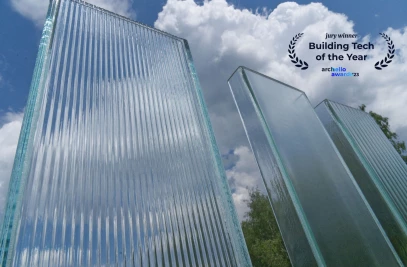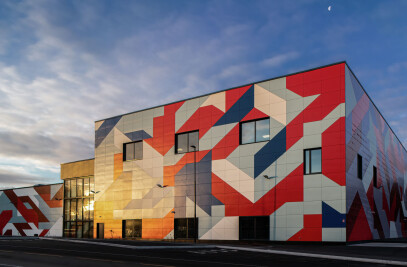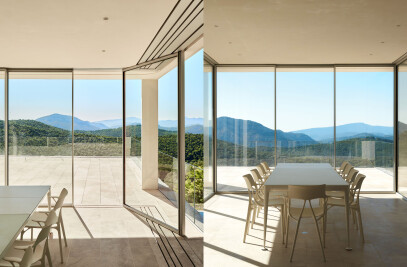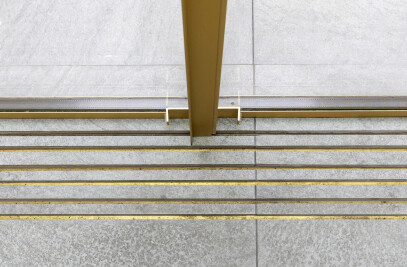The MAM Competence Center by INNOCAD Architecture has been selected by the public as the Archello Awards 2023 Office Building of the Year. Located in Großhöflein, Austria, the science-informed biophilic design offers an organic headquarters and work environment derived from strategies concluded in the study ’14 Patterns of Biophilic Design’ by Terrapin Bright Green. The project stands out for its use of materials and patterns, dynamic and diffused light, optimized acoustics, and a compelling emphasis on sustainability and human-centred design.
INNOCAD Architecture tells Archello that the main challenge in approaching the project was designing a building that could grow organically over the years in response to changing spatial needs. The building’s concept responds to this complex demand through the principle of cellular division, with intersecting circles and green atria as ‘nuclei’ that originate in inspiring, serpentine space patterns.
Proceeding from the first stage of construction, which consists of three circular interlocked volumes, new additions with similar programmatic information are repeated into five cylinders while remaining connected to their predecessor. The result is a ‘growing’ building in which respective building sections flow seamlessly into each other. Although the future additions add to the building’s volume, they will not essentially alter the overall appearance. Each division functions on its own but feeds off the other.
Each cell nucleus takes the form of a two-story atrium with a greenhouse-like roof and garden. This weather-protected indoor garden allows natural light access from within and acts as a spatial link between floors.
Around the indoor garden, the building’s central functions are arranged, which include collaborative zones that offer open communication and temporary work areas. Alongside the façades are work desks and rooms for focused working zones. A single access ring of circulation connects all the zones, resulting in a highly efficient system in terms of volume and movement.
The building’s circular geometry and interlinked levels create a dynamic loop weaving throughout all levels, connecting people from different disciplines while fostering interaction, physical activity and cognitive diversion.
In line with its organic principles, the building’s entire demand for energy, including heating and cooling, is covered by renewable energy. The primary structure is made from reinforced concrete, mainly due to the thermal core activation needed for heating and cooling. Furthermore, the compact cylindrical shape offers an optimized large volume to small surface area, contributing to the building’s overall efficiency.
On the exterior, the distinctive sensor-controlled lamellae façade fabricated with anodized bronze components and perforated aluminum automatically reacts to the sun’s positioning, minimizing heat gain in the summer, while the floor-to-ceiling glazing stores solar energy gains in the winter.
In summary, the holistic approach to this project unifies the architects’ transdisciplinary work, years of research and analysis with experts in human-centred design. The result is a building with a democratic concept, which offers users the same spatial quality, daylight, and connection to nature – no matter where one is in the headquarters.




































